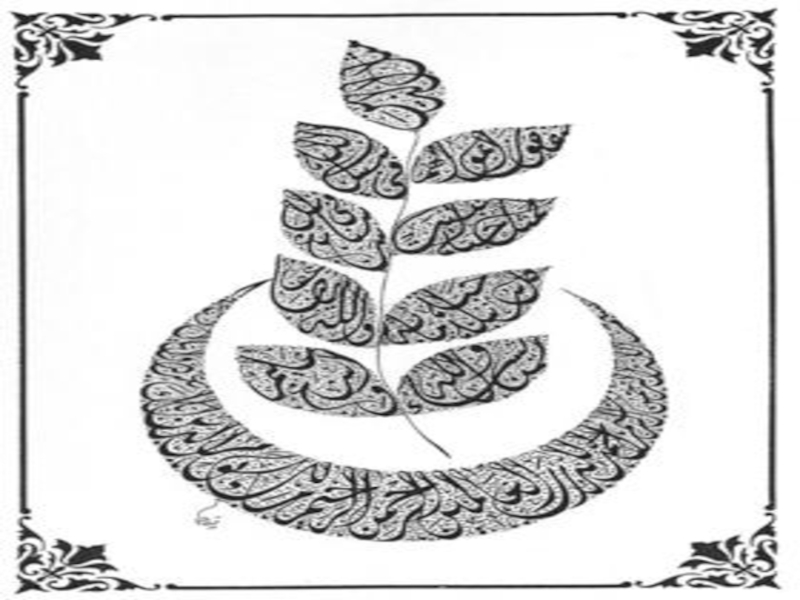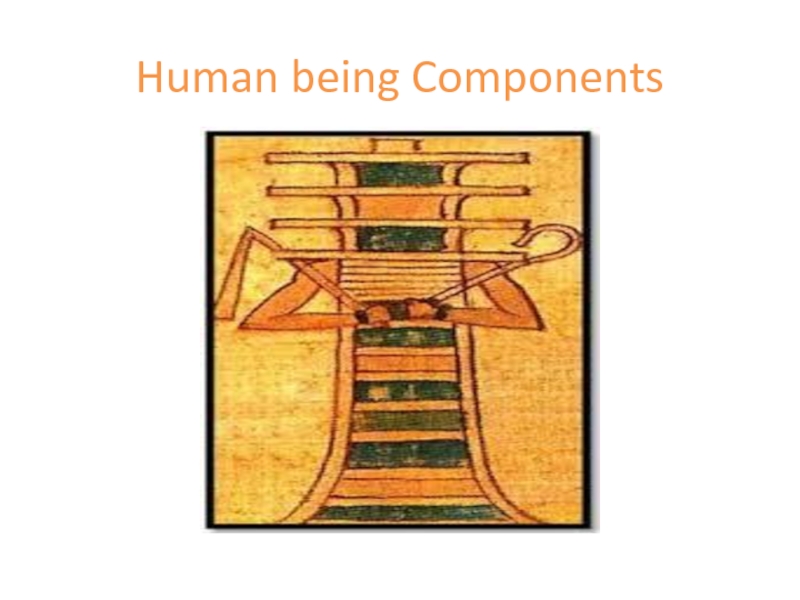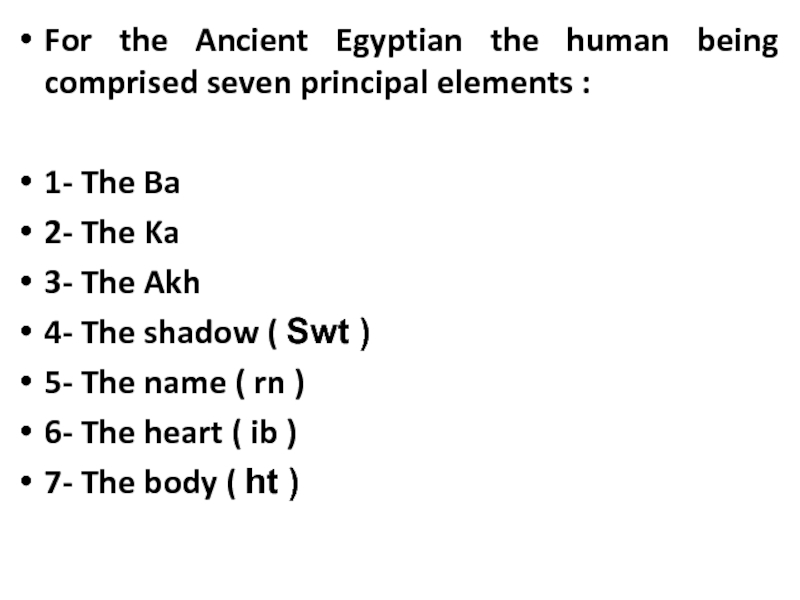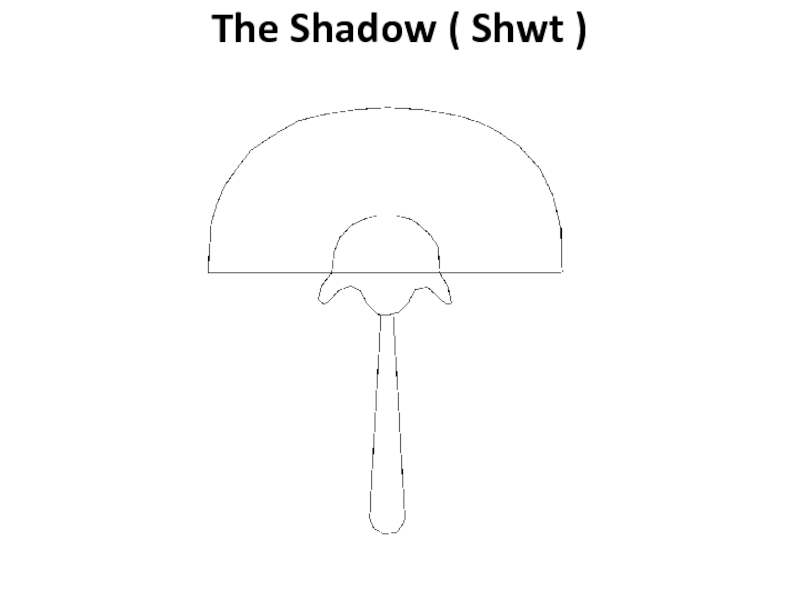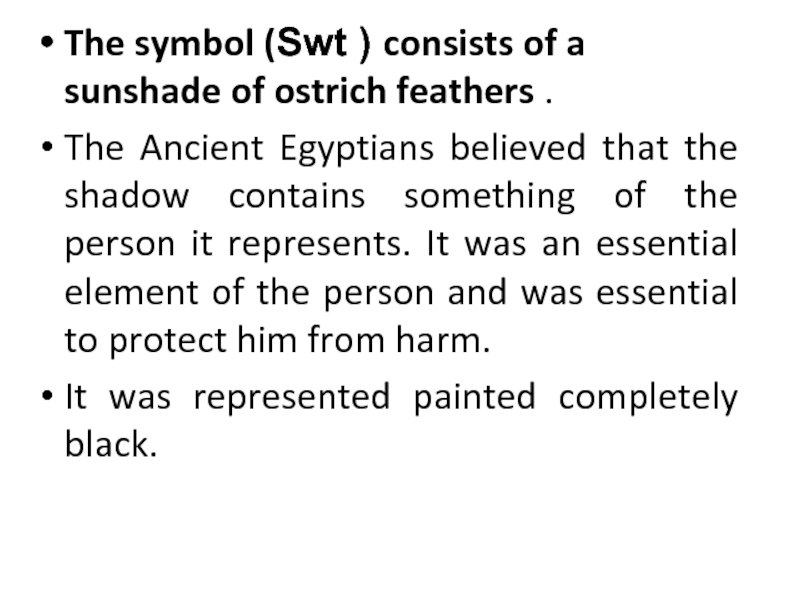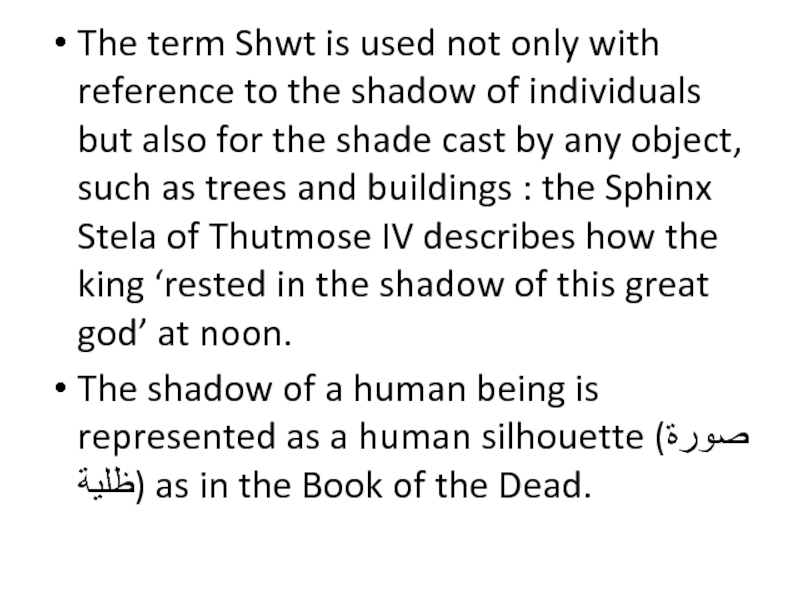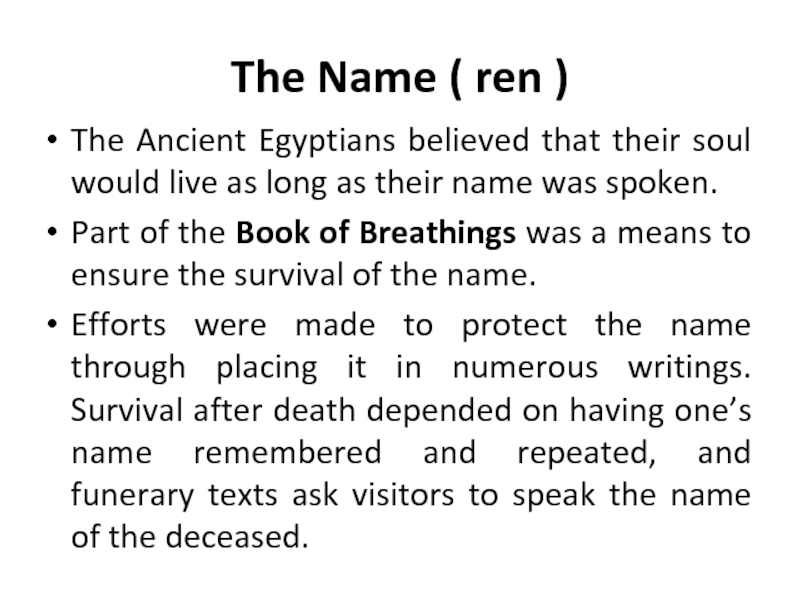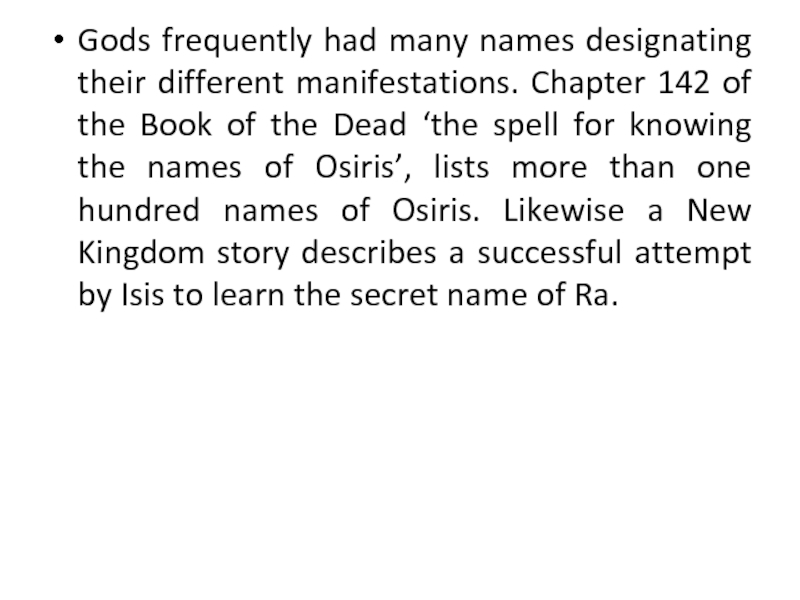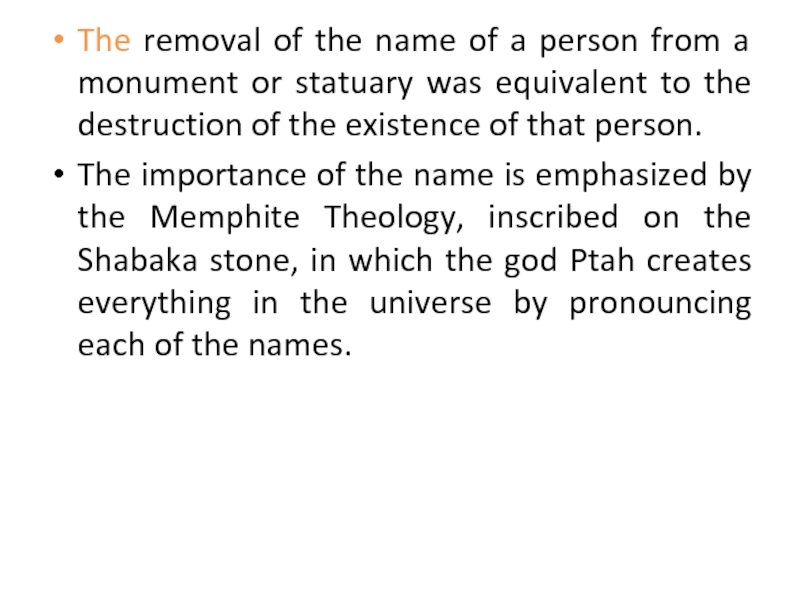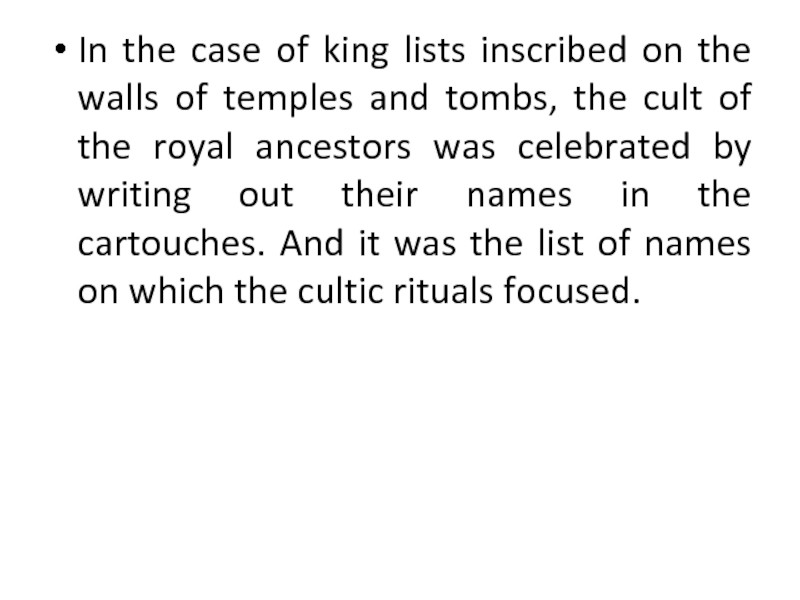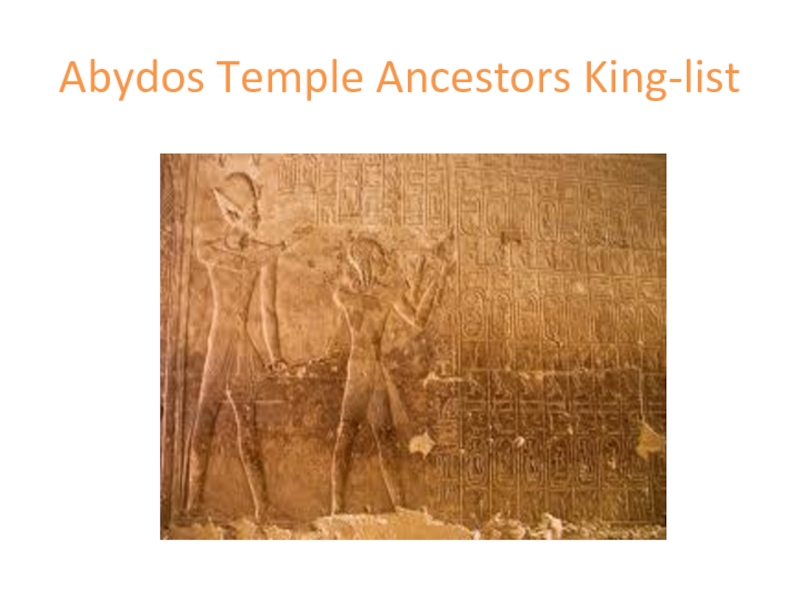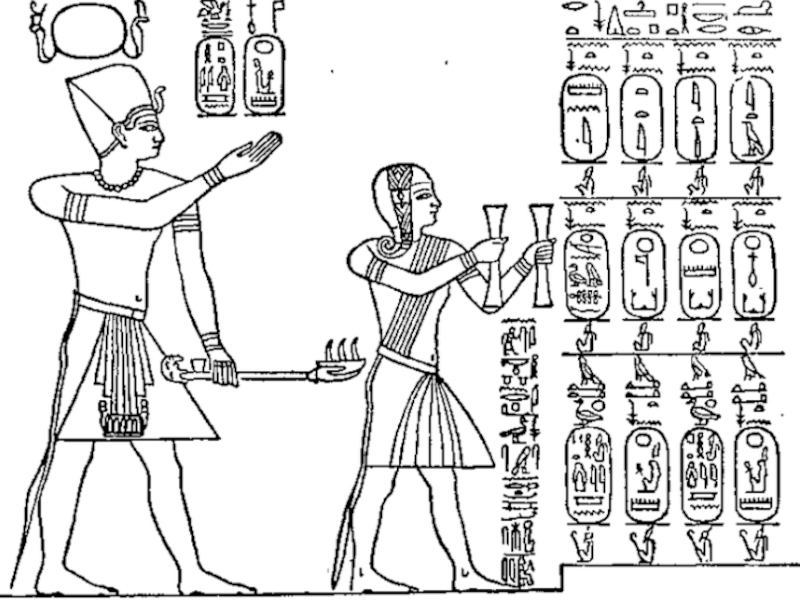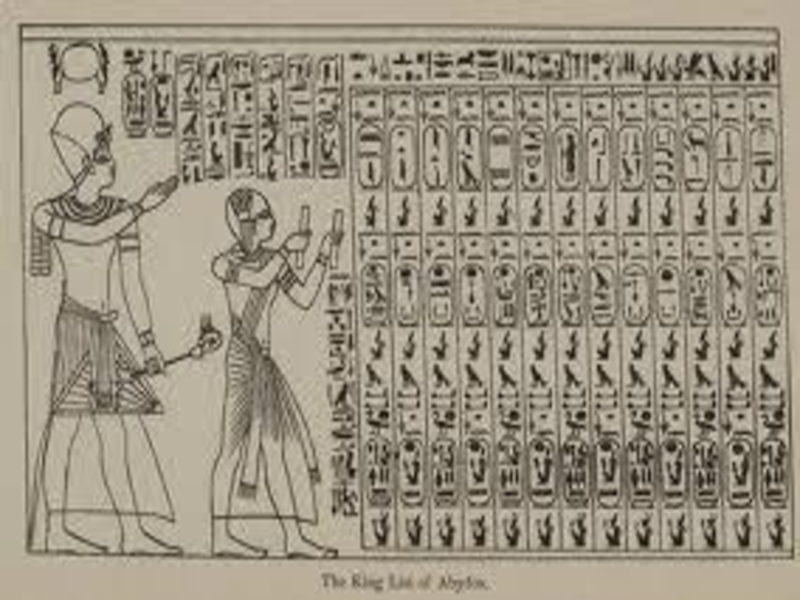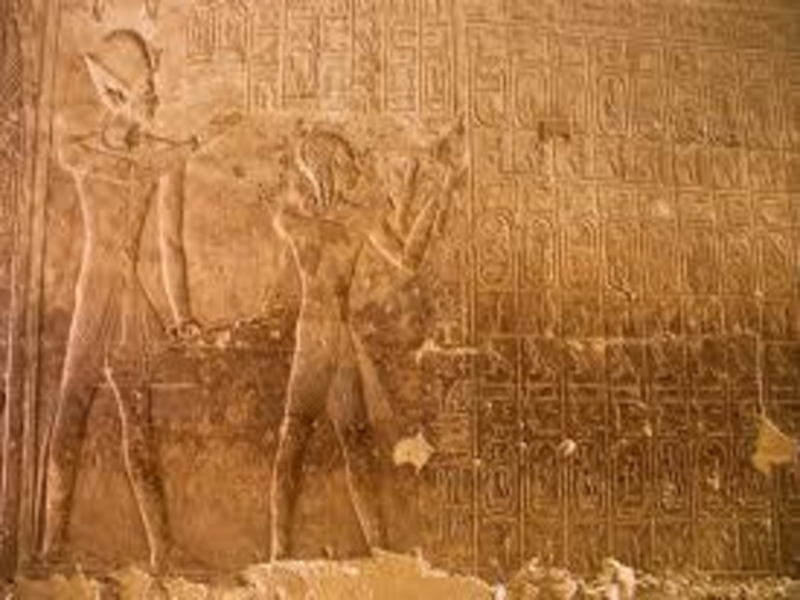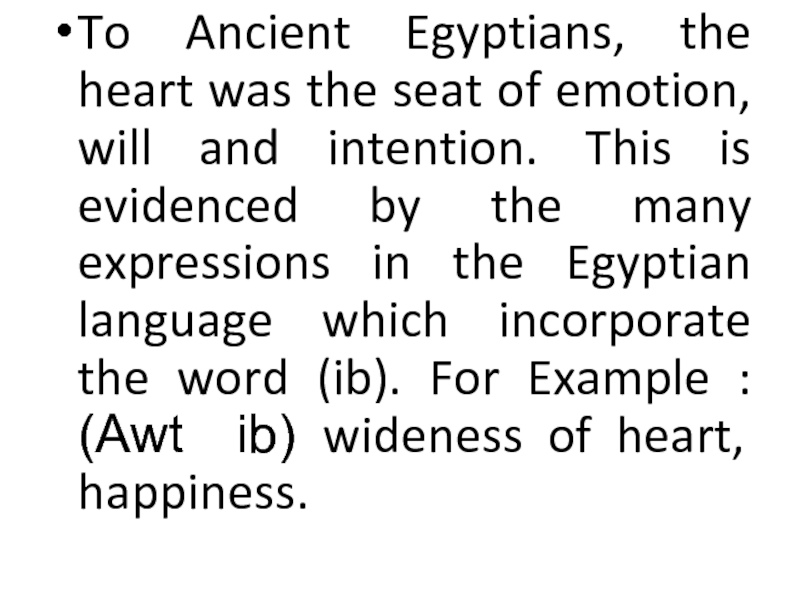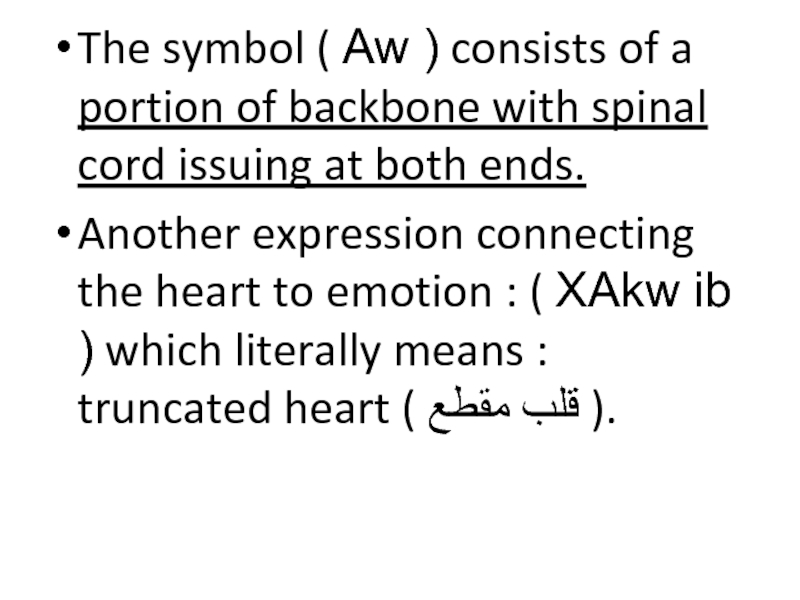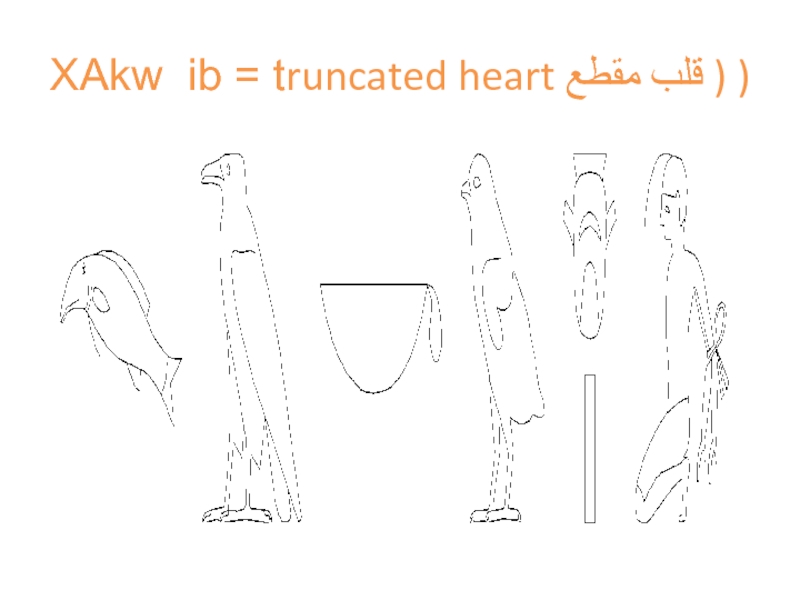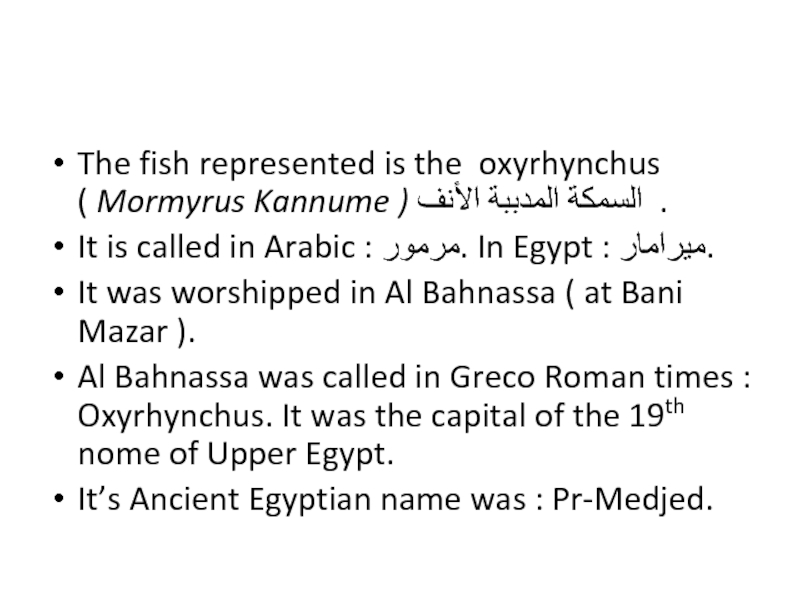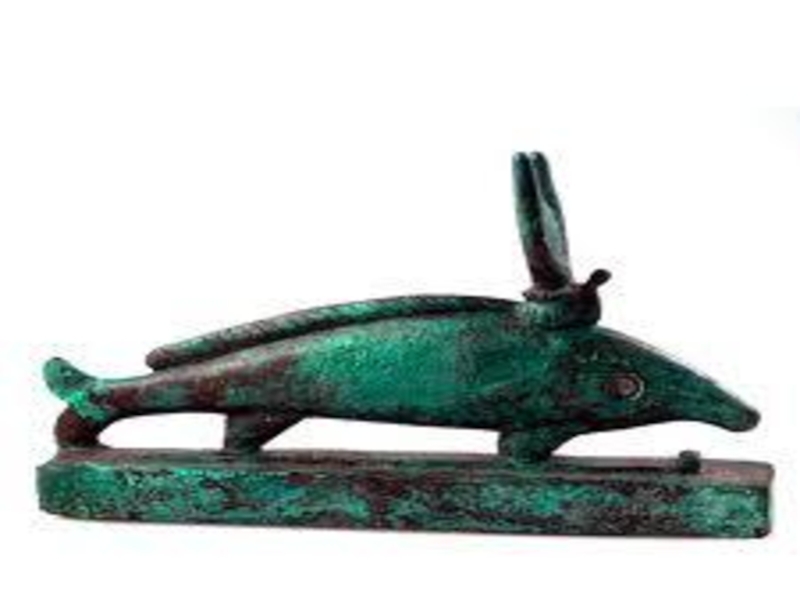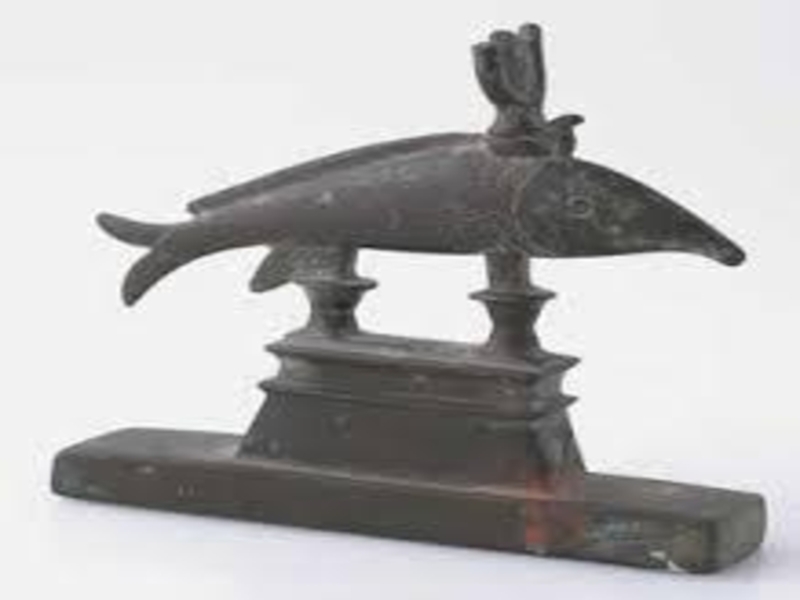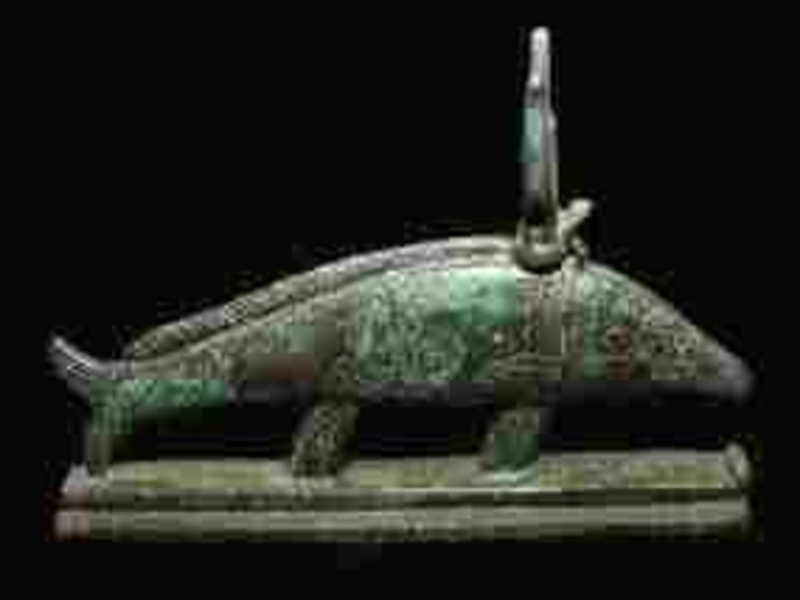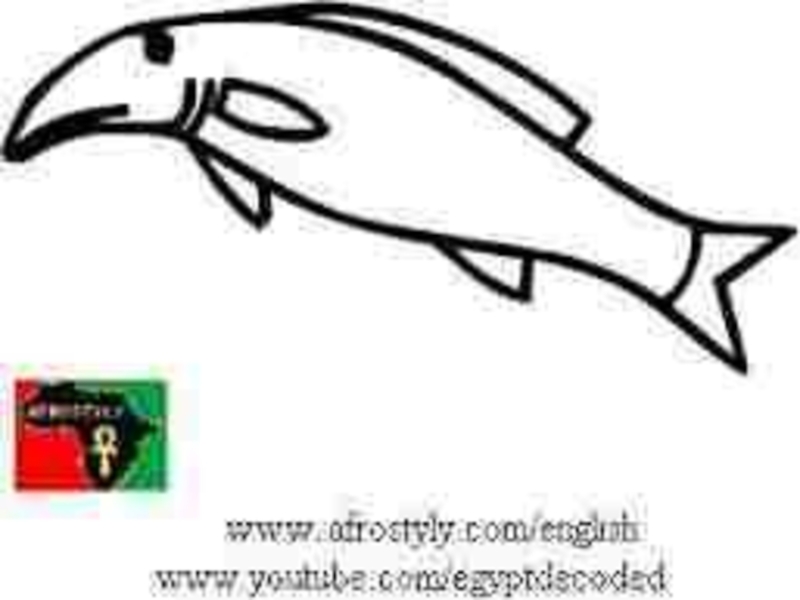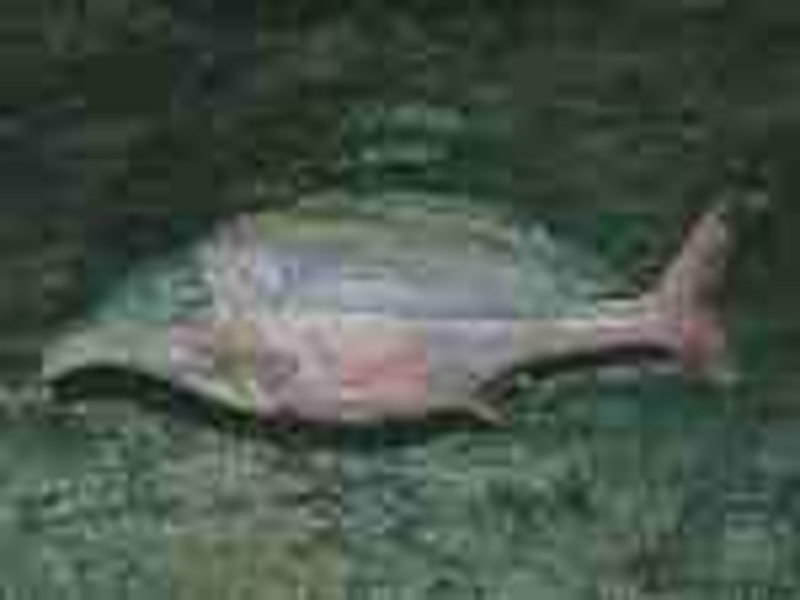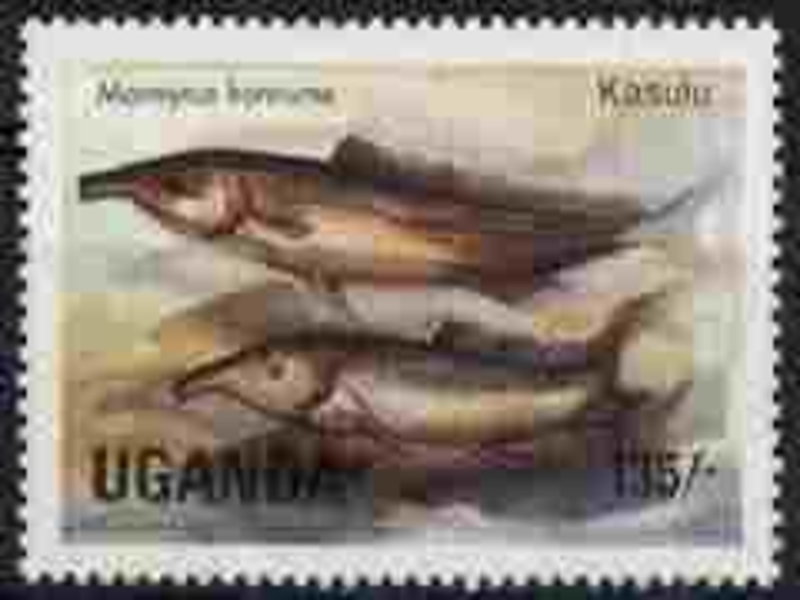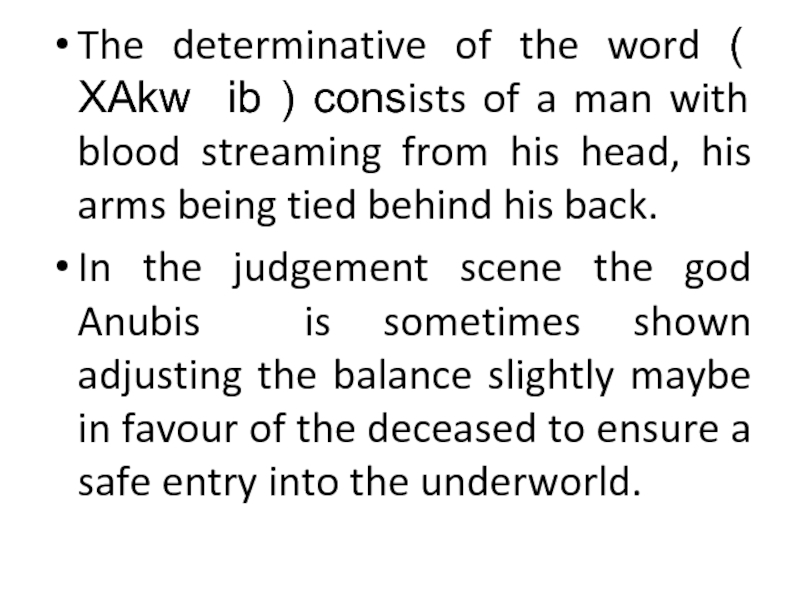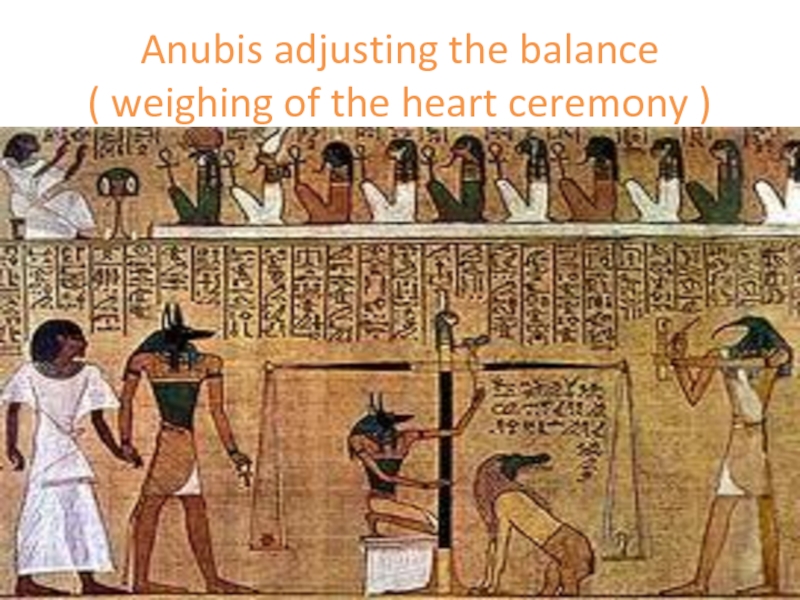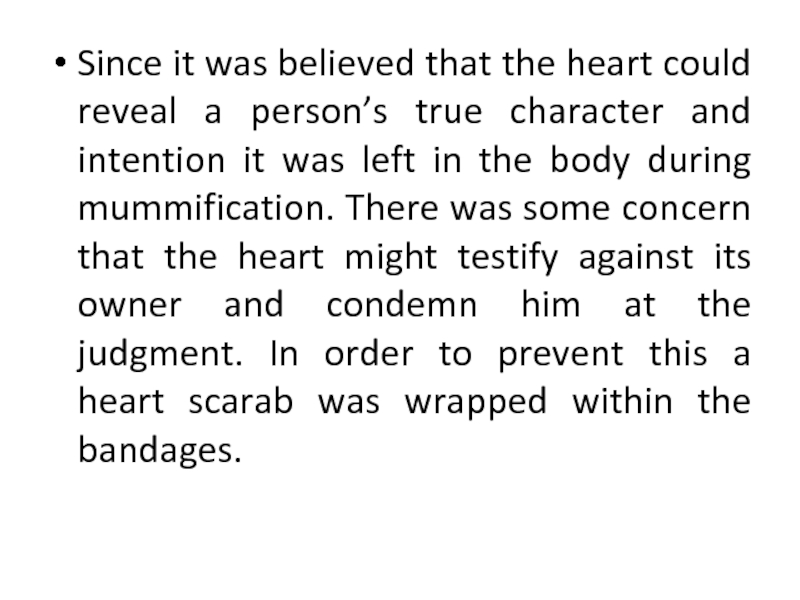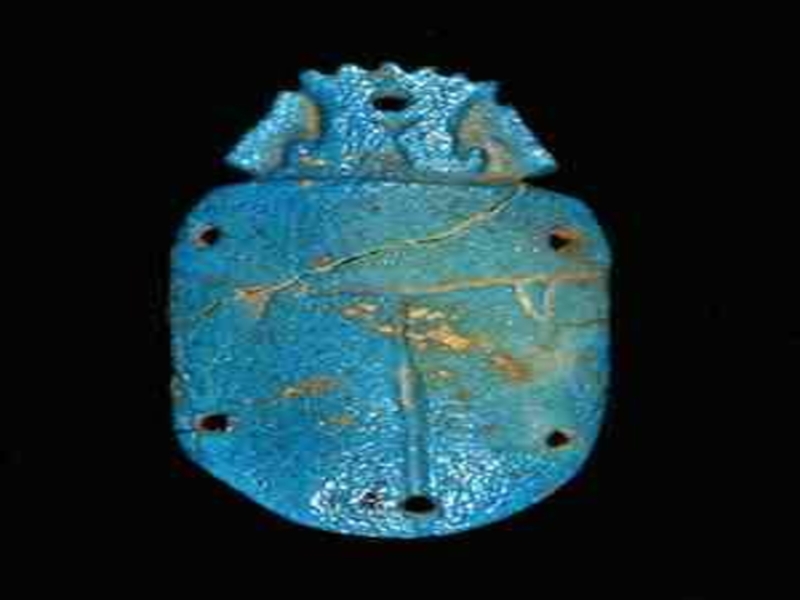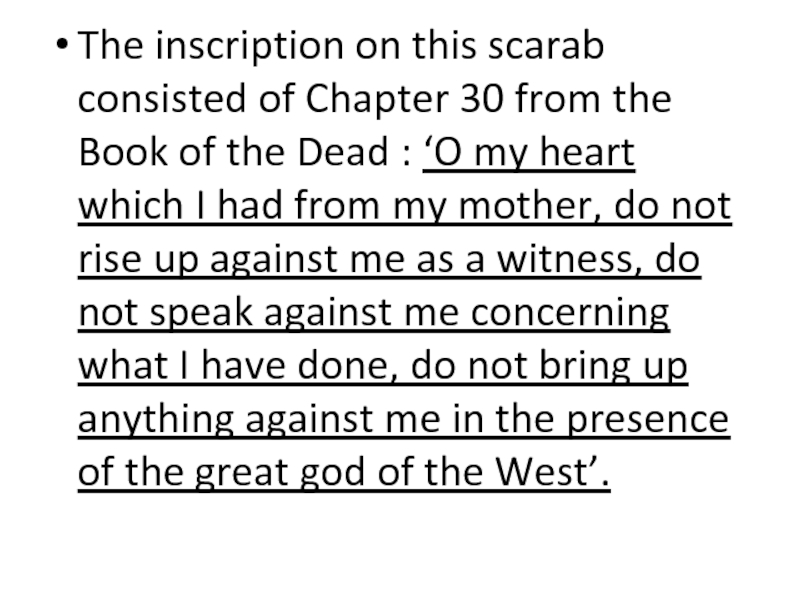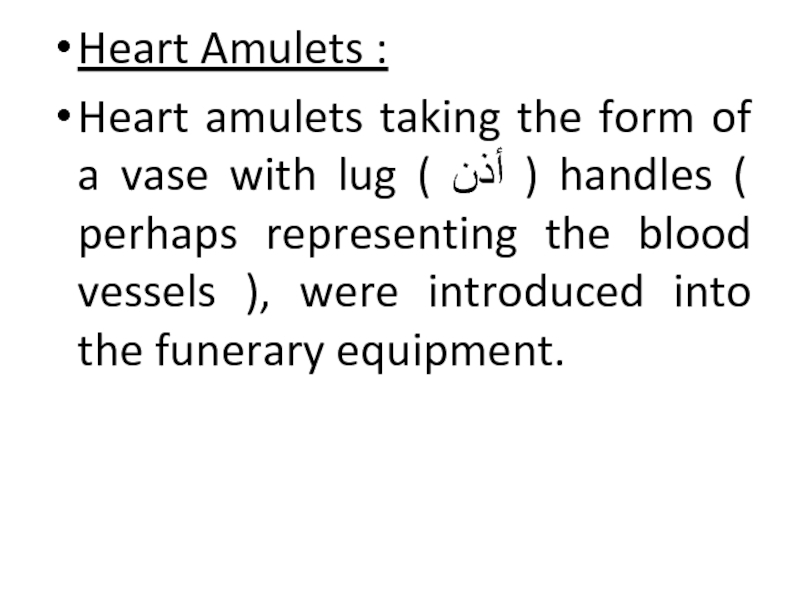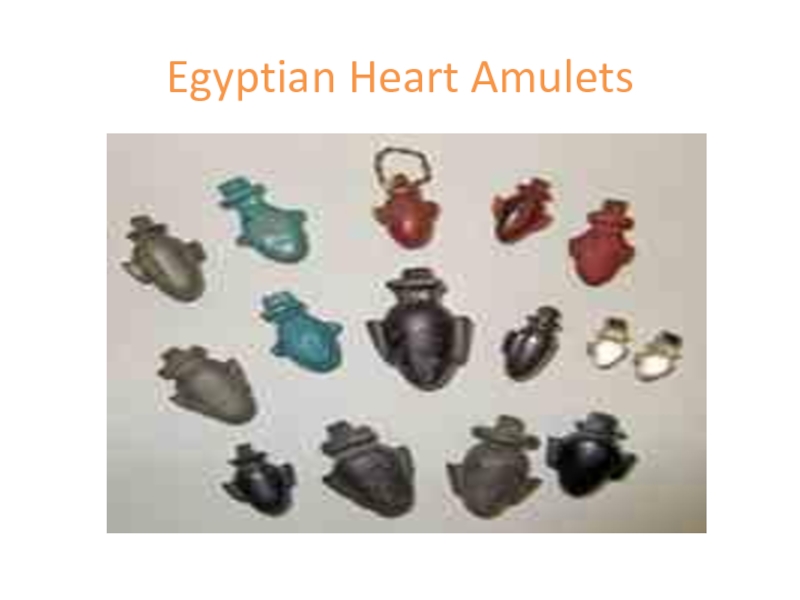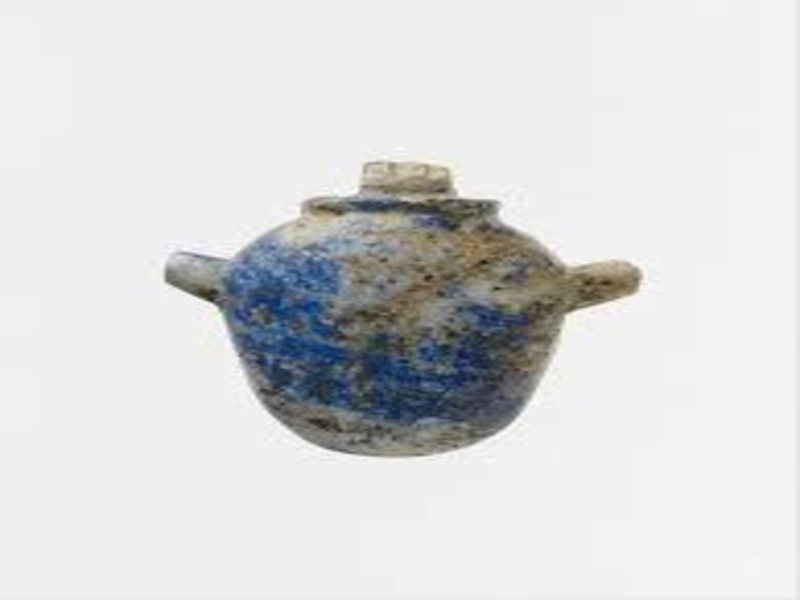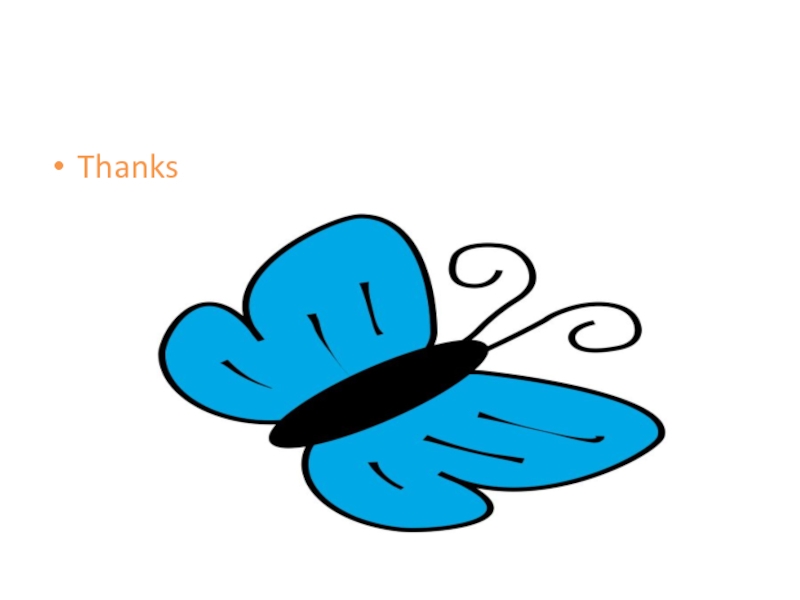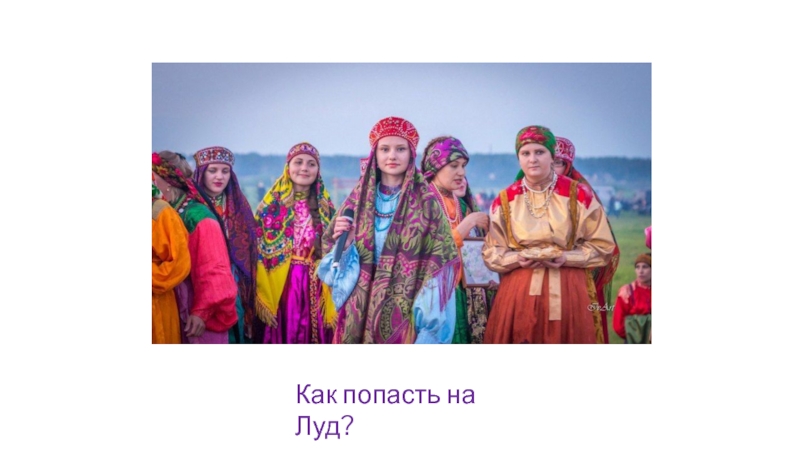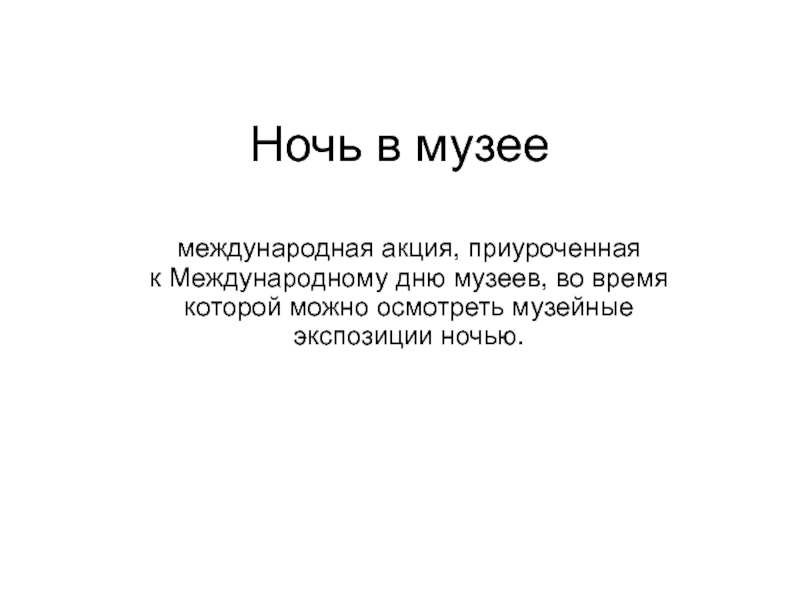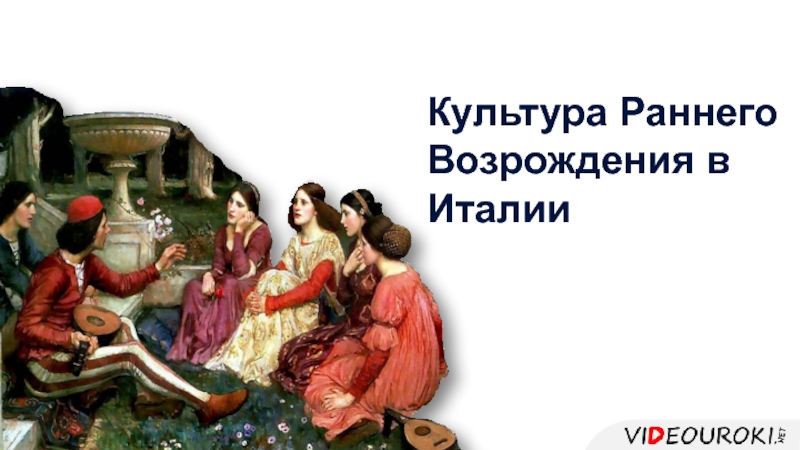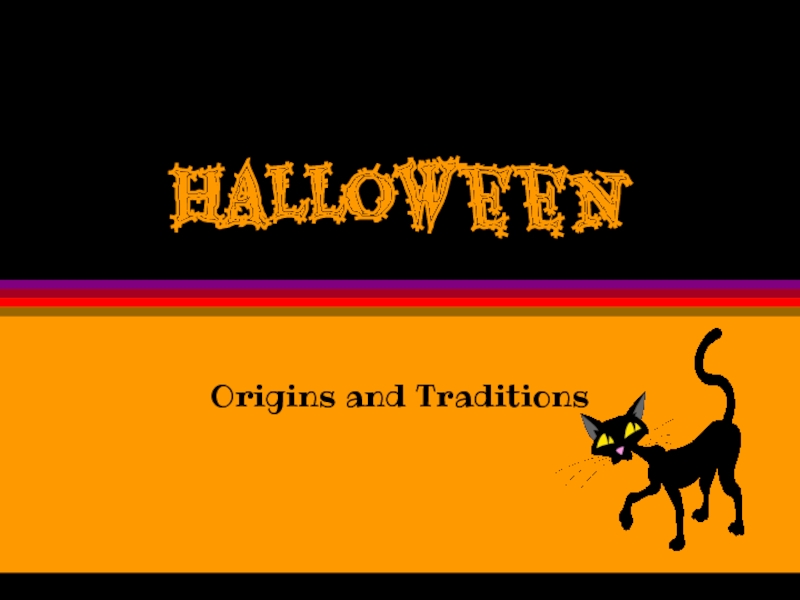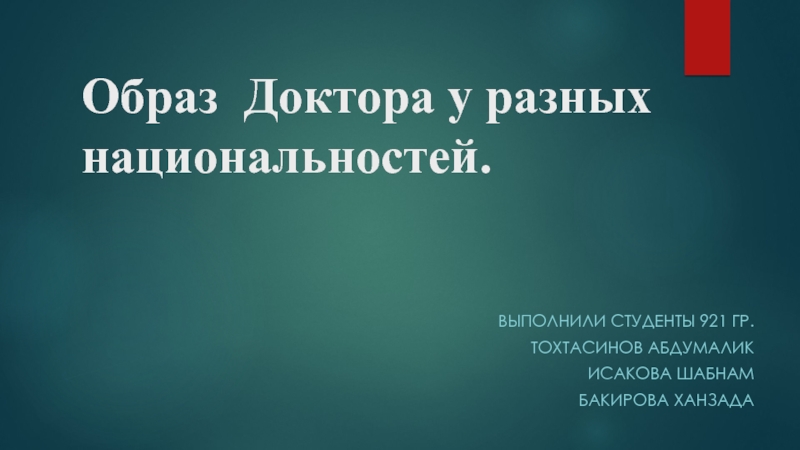- Главная
- Разное
- Дизайн
- Бизнес и предпринимательство
- Аналитика
- Образование
- Развлечения
- Красота и здоровье
- Финансы
- Государство
- Путешествия
- Спорт
- Недвижимость
- Армия
- Графика
- Культурология
- Еда и кулинария
- Лингвистика
- Английский язык
- Астрономия
- Алгебра
- Биология
- География
- Детские презентации
- Информатика
- История
- Литература
- Маркетинг
- Математика
- Медицина
- Менеджмент
- Музыка
- МХК
- Немецкий язык
- ОБЖ
- Обществознание
- Окружающий мир
- Педагогика
- Русский язык
- Технология
- Физика
- Философия
- Химия
- Шаблоны, картинки для презентаций
- Экология
- Экономика
- Юриспруденция
Human being Components презентация
Содержание
- 2. Human being Components
- 3. For the Ancient Egyptian the human being
- 4. The Shadow ( Shwt )
- 5. The symbol (Swt ) consists of a
- 6. Funerary texts describe the shadow as having
- 7. The term Shwt is used not only
- 8. The Name ( ren ) The Ancient
- 9. -When inscribing funerary monuments for relatives, people
- 10. Gods frequently had many names designating their
- 11. Enemies names : Enemies were designated through
- 12. The removal of the name of a
- 13. In the case of king lists inscribed
- 14. Abydos Temple Ancestors King-list
- 18. We can see on in front of
- 19. The Heart ( ib )
- 20. To Ancient Egyptians, the heart was the
- 21. The symbol ( Aw )
- 22. The symbol ( Aw ) consists of
- 23. XAkw ib = truncated heart قلب مقطع ) )
- 24. The fish represented is the oxyrhynchus
- 32. The determinative of the word ( XAkw
- 33. Anubis adjusting the balance ( weighing of the heart ceremony )
- 34. Since it was believed that the heart
- 37. The inscription on this scarab consisted of
- 38. Heart Amulets : Heart amulets taking the
- 39. Egyptian Heart Amulets
- 42. Thanks
Слайд 3For the Ancient Egyptian the human being comprised seven principal elements
:
1- The Ba
2- The Ka
3- The Akh
4- The shadow ( Swt )
5- The name ( rn )
6- The heart ( ib )
7- The body ( ht )
1- The Ba
2- The Ka
3- The Akh
4- The shadow ( Swt )
5- The name ( rn )
6- The heart ( ib )
7- The body ( ht )
Слайд 5The symbol (Swt ) consists of a sunshade of ostrich feathers
.
The Ancient Egyptians believed that the shadow contains something of the person it represents. It was an essential element of the person and was essential to protect him from harm.
It was represented painted completely black.
The Ancient Egyptians believed that the shadow contains something of the person it represents. It was an essential element of the person and was essential to protect him from harm.
It was represented painted completely black.
Слайд 6Funerary texts describe the shadow as having power and capable of
moving at great speed. It was believed that power was transferred to those over whom the solar shadow fell.
In the city of Amarna there was a special type of shrine dedicated to the god Aton, known as (Swt Ra) ‘sun-shade’.
In the city of Amarna there was a special type of shrine dedicated to the god Aton, known as (Swt Ra) ‘sun-shade’.
Слайд 7The term Shwt is used not only with reference to the
shadow of individuals but also for the shade cast by any object, such as trees and buildings : the Sphinx Stela of Thutmose IV describes how the king ‘rested in the shadow of this great god’ at noon.
The shadow of a human being is represented as a human silhouette (صورة ظلية) as in the Book of the Dead.
The shadow of a human being is represented as a human silhouette (صورة ظلية) as in the Book of the Dead.
Слайд 8The Name ( ren )
The Ancient Egyptians believed that their soul
would live as long as their name was spoken.
Part of the Book of Breathings was a means to ensure the survival of the name.
Efforts were made to protect the name through placing it in numerous writings. Survival after death depended on having one’s name remembered and repeated, and funerary texts ask visitors to speak the name of the deceased.
Part of the Book of Breathings was a means to ensure the survival of the name.
Efforts were made to protect the name through placing it in numerous writings. Survival after death depended on having one’s name remembered and repeated, and funerary texts ask visitors to speak the name of the deceased.
Слайд 9-When inscribing funerary monuments for relatives, people credit themselves with ‘causing
his/her name to live’.
A person could have multiple names expressing different aspects of his personality. Kings had at least five names corresponding to the five-part titulary.
A person could have multiple names expressing different aspects of his personality. Kings had at least five names corresponding to the five-part titulary.
Слайд 10Gods frequently had many names designating their different manifestations. Chapter 142
of the Book of the Dead ‘the spell for knowing the names of Osiris’, lists more than one hundred names of Osiris. Likewise a New Kingdom story describes a successful attempt by Isis to learn the secret name of Ra.
Слайд 11Enemies names :
Enemies were designated through derogatory (منتقص ، ازدرائى) epithets,
causing their names to remain unspoken.
The names of enemies were written on figurines that were ritually destroyed in order to render the named entities powerless.
The names of enemies were written on figurines that were ritually destroyed in order to render the named entities powerless.
Слайд 12The removal of the name of a person from a monument
or statuary was equivalent to the destruction of the existence of that person.
The importance of the name is emphasized by the Memphite Theology, inscribed on the Shabaka stone, in which the god Ptah creates everything in the universe by pronouncing each of the names.
The importance of the name is emphasized by the Memphite Theology, inscribed on the Shabaka stone, in which the god Ptah creates everything in the universe by pronouncing each of the names.
Слайд 13In the case of king lists inscribed on the walls of
temples and tombs, the cult of the royal ancestors was celebrated by writing out their names in the cartouches. And it was the list of names on which the cultic rituals focused.
Слайд 18We can see on in front of the king-list of Abydos
temple king Sethi I showing the way to his son Ramesses II towards the royal ancestors names. Sethi I in holding a censer, while Ramesses II is holding two document containers (mks ).
Слайд 20To Ancient Egyptians, the heart was the seat of emotion, will
and intention. This is evidenced by the many expressions in the Egyptian language which incorporate the word (ib). For Example : (Awt ib) wideness of heart, happiness.
Слайд 22The symbol ( Aw ) consists of a portion of backbone
with spinal cord issuing at both ends.
Another expression connecting the heart to emotion : ( XAkw ib ) which literally means : truncated heart ( قلب مقطع ).
Another expression connecting the heart to emotion : ( XAkw ib ) which literally means : truncated heart ( قلب مقطع ).
Слайд 24
The fish represented is the oxyrhynchus
( Mormyrus Kannume ) السمكة المدببة الأنف .
It is called in Arabic : مرمور. In Egypt : ميرامار.
It was worshipped in Al Bahnassa ( at Bani Mazar ).
Al Bahnassa was called in Greco Roman times : Oxyrhynchus. It was the capital of the 19th nome of Upper Egypt.
It’s Ancient Egyptian name was : Pr-Medjed.
It is called in Arabic : مرمور. In Egypt : ميرامار.
It was worshipped in Al Bahnassa ( at Bani Mazar ).
Al Bahnassa was called in Greco Roman times : Oxyrhynchus. It was the capital of the 19th nome of Upper Egypt.
It’s Ancient Egyptian name was : Pr-Medjed.
Слайд 32The determinative of the word ( XAkw ib ) consists of
a man with blood streaming from his head, his arms being tied behind his back.
In the judgement scene the god Anubis is sometimes shown adjusting the balance slightly maybe in favour of the deceased to ensure a safe entry into the underworld.
In the judgement scene the god Anubis is sometimes shown adjusting the balance slightly maybe in favour of the deceased to ensure a safe entry into the underworld.
Слайд 34Since it was believed that the heart could reveal a person’s
true character and intention it was left in the body during mummification. There was some concern that the heart might testify against its owner and condemn him at the judgment. In order to prevent this a heart scarab was wrapped within the bandages.
Слайд 37The inscription on this scarab consisted of Chapter 30 from the
Book of the Dead : ‘O my heart which I had from my mother, do not rise up against me as a witness, do not speak against me concerning what I have done, do not bring up anything against me in the presence of the great god of the West’.
Слайд 38Heart Amulets :
Heart amulets taking the form of a vase with
lug ( أذن ) handles ( perhaps representing the blood vessels ), were introduced into the funerary equipment.
